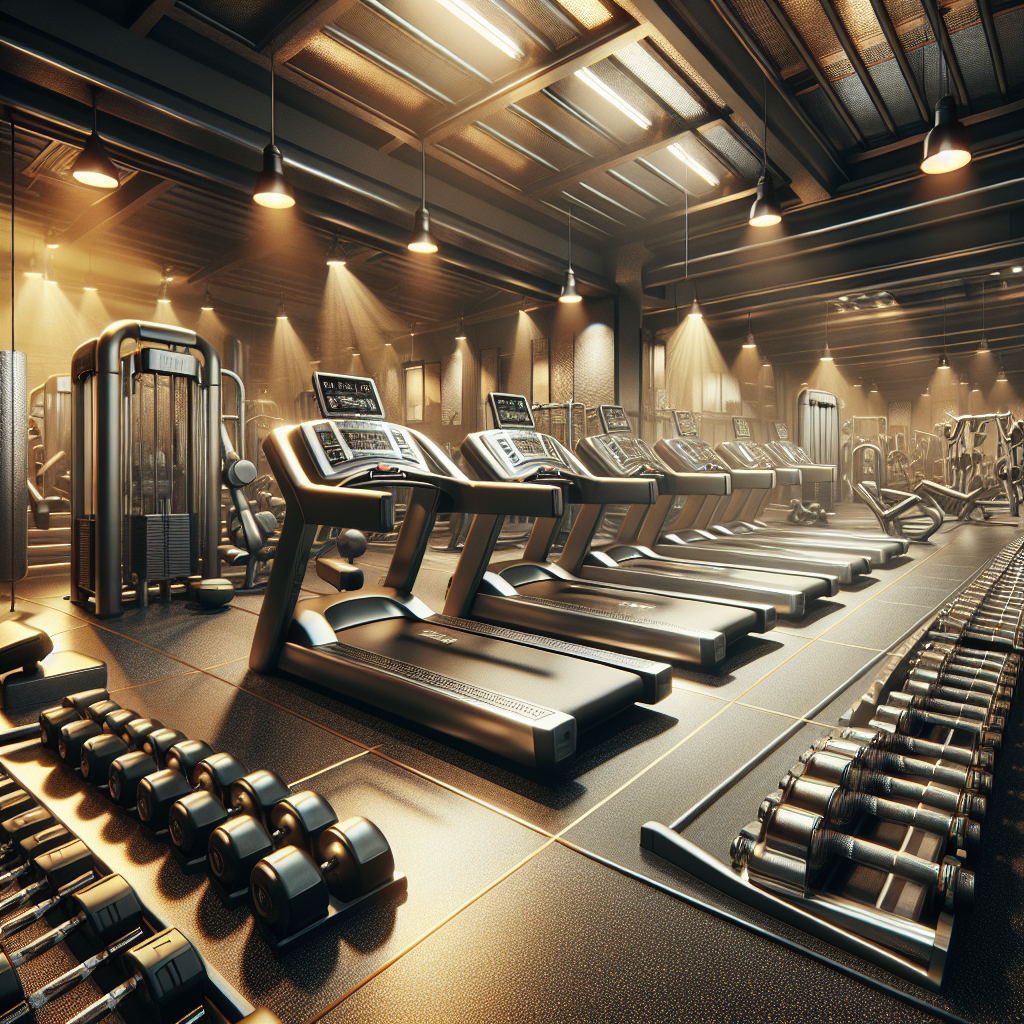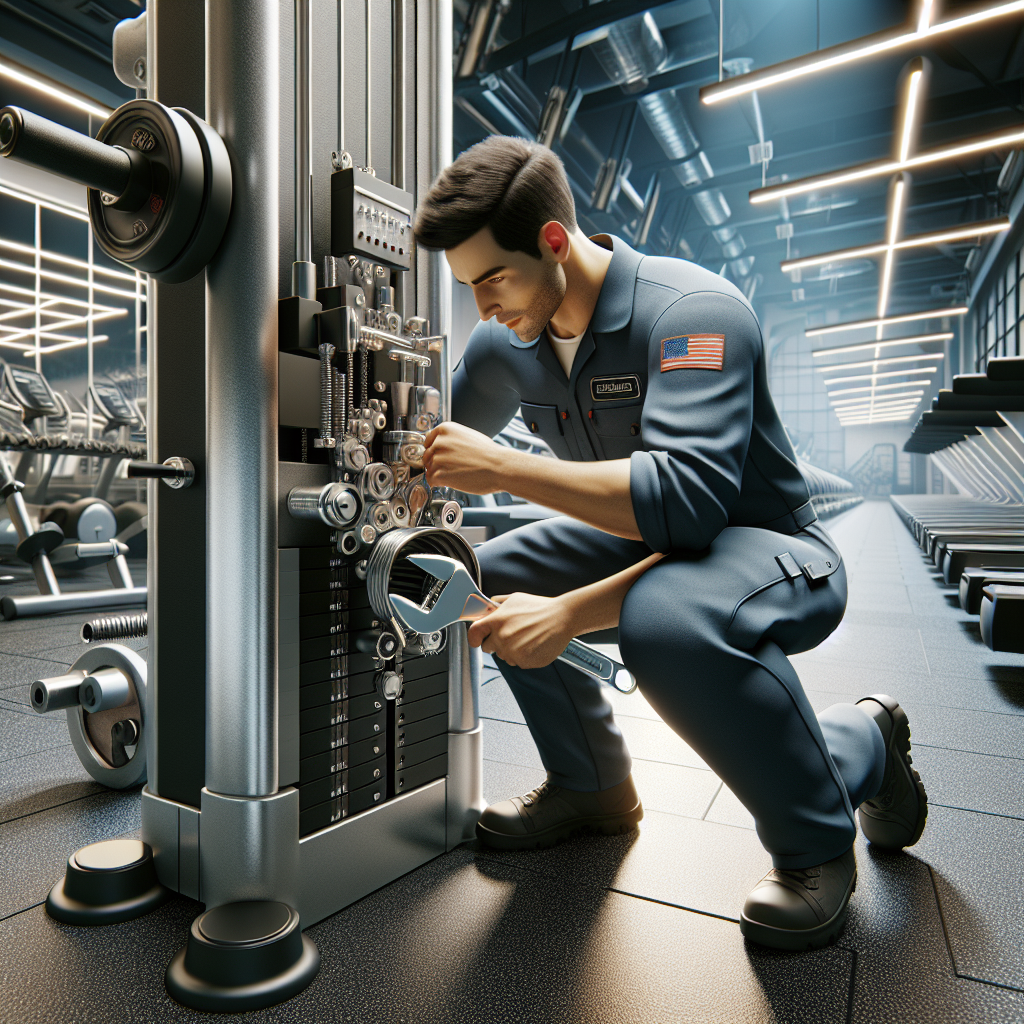Keeping your fitness facility in prime condition is not just about aesthetics; it’s a matter of safety, functionality, and longevity. Regular gym maintenance ensures that equipment operates smoothly, minimizes the risk of injury to users, and extends the lifespan of the machines. Moreover, a well-maintained gym can significantly enhance the reputation of your facility, leading to increased customer satisfaction and retention.
For property management companies, the responsibility to uphold a safe and operational fitness environment is paramount. Ensuring that all gym apparatus are in excellent condition reflects the company’s commitment to the well-being of its residents. From cardiovascular machines to strength training equipment, each piece requires a tailored approach for maintenance. Neglecting this can lead to costly repairs or replacements and potential liability issues should an accident occur due to faulty equipment.
Commercial facilities, such as hotels, health clubs, and universities, must also recognize the impact that a well-maintained gym has on their brand image. It speaks volumes about the establishment’s dedication to providing high-quality services. Consequently, regular maintenance checks and prompt repairs are not tasks to be overlooked.
Contact us today to ensure your gym equipment is always in top condition! Our expertise in gym equipment maintenance and repair caters to a broad range of clients including condominiums, residential management companies, and homeowner associations. Don’t let wear and tear diminish the quality of your fitness offerings. Partner with us for comprehensive care of your gym facilities.
Preventive Measures for Long-Term Equipment Sustainability

Implementing a rigorous preventive maintenance program is key to ensuring the long-term sustainability of gym equipment. Proactive care includes regular inspections, cleaning, and servicing, which can prevent minor issues from escalating into major faults. By keeping equipment in optimal condition, fitness centers can avoid the downtime and expense associated with significant repairs or full replacements.
One of the fundamental aspects of preventive measures is to adhere to the manufacturer’s recommended maintenance schedule. This typically includes daily, weekly, and monthly tasks such as tightening bolts, lubricating moving parts, and checking for wear and tear on cables and belts. Additionally, electronic components in cardio machines require periodic software updates and recalibrations to function accurately.
It’s also crucial to educate staff and users on the proper use of equipment. Misuse not only poses a risk to individuals but can also damage machines over time. Clear signage and periodic training sessions can go a long way in maintaining the integrity of gym apparatus. Moreover, having a system in place for users to report any faults or concerns promptly ensures that issues are addressed swiftly, minimizing potential harm to both users and equipment.
Finally, environmental factors such as temperature, humidity, and cleanliness of the facility play a significant role in the longevity of gym equipment. Ensuring a clean, well-ventilated space with controlled humidity levels can prevent rust, mold, and other conditions that may compromise the functionality and safety of the equipment.
Professional Gym Equipment Inspection and Servicing
Regular professional inspection and servicing are crucial to maintaining a safe and functional gym environment. An expert technician can identify potential issues that may not be immediately apparent to staff or gym users. These professionals have the skills and tools necessary to perform comprehensive diagnostics and to ensure that all gym equipment meets industry safety standards.
During a professional inspection, technicians meticulously examine each piece of equipment, checking for structural integrity, mechanical performance, and electrical safety. They look for signs of excessive wear, corrosion, and other damage that could lead to equipment failure or safety hazards. Servicing often includes the adjustment and alignment of machines, replacement of worn parts, and updating of software systems in advanced fitness equipment.
Furthermore, professionals bring with them the latest knowledge of advancements in the fitness equipment industry. They can offer advice on when to invest in upgrades or suggest new pieces of equipment that could enhance the facility’s offerings. Their experience also allows them to tailor maintenance plans to the specific needs of each facility, considering factors such as equipment age, usage patterns, and manufacturer guidelines.
By scheduling regular professional inspections and servicing, gym owners and managers can extend the lifespan of their equipment, reduce the likelihood of costly repairs, and maintain a high standard of safety and performance. This proactive approach not only protects their investment but also reassures gym members that their wellbeing is a top priority.
Cleaning Protocols for a Hygienic Workout Environment

A hygienic workout environment is essential for the health and safety of gym users. Implementing stringent cleaning protocols is a key part of gym maintenance that helps prevent the spread of germs and infection. It starts with the regular disinfection of high-touch areas such as equipment handles, touch screens, and seating surfaces. Using EPA-approved disinfectants is crucial in effectively eliminating pathogens that can linger on surfaces.
Staff should be trained on the proper techniques for cleaning each type of equipment, which includes the use of microfiber cloths to prevent scratching and the proper dilution of cleaning solutions to ensure safety and effectiveness. The timing of cleaning routines is also important – high traffic areas and popular equipment should be cleaned multiple times throughout the day, while a thorough cleaning of the entire facility should be conducted during off-peak hours.
Aside from the equipment, other areas of the gym require attention as well. Locker rooms, bathrooms, and showers are breeding grounds for bacteria and require regular and thorough cleaning. Floors should be mopped with disinfectant, and carpets need to be vacuumed daily. Additionally, providing gym-goers with easy access to hand sanitizers and disinfectant wipes encourages a collaborative effort in maintaining cleanliness.
Clear signage reminding users to wipe down equipment after use and proper waste disposal bins for used towels and wipes can further enhance the cleanliness of the facility. A clean gym not only ensures a healthier environment but also contributes to a more pleasant and professional atmosphere, which can be a deciding factor for potential new members.
Troubleshooting Common Gym Equipment Issues

Regular gym maintenance can help to prevent many issues, but sometimes, gym equipment may still experience problems. Understanding how to troubleshoot common issues can minimize downtime and ensure that your equipment is back in action swiftly. For cardio machines like treadmills and ellipticals, common problems include belt slippage, noise, and electronic malfunctions. These can often be resolved by adjusting belt tension, lubricating moving parts, or resetting the machine’s system.
Resistance machines, such as weight stacks and cable machines, can face issues like jammed weights or frayed cables. Regular inspections can catch these problems early, and quick replacements of worn parts can prevent accidents and further damage. In the case of jammed weights, ensuring that the guide rods are clean and straight can often resolve the issue.
Free weights require less complex troubleshooting. The focus should be on checking for rust on metal parts, ensuring dumbbells and barbells are free of cracks, and that the weight plates are not chipped or damaged. A quick sanding and application of rust-inhibitor can deal with minor rust issues, whereas structural damage may require equipment replacement.
Digital interfaces have become commonplace on modern gym equipment, and issues with these systems can range from unresponsive touchscreens to software glitches. In such cases, referring to the manufacturer’s manual for troubleshooting steps or contacting the supplier for technical support can be the most effective approach.
For gym operators, having a basic understanding of these troubleshooting tips can be invaluable. However, when encountering complex or persistent issues, it’s advisable to seek professional help to avoid further damage and ensure safety. Properly maintaining and promptly addressing equipment malfunctions is essential for the smooth operation of a fitness facility.
Creating a Maintenance Schedule for Optimal Facility Performance

Creating a maintenance schedule is a critical step in ensuring optimal performance and longevity of gym equipment. A comprehensive schedule should include daily, weekly, monthly, and annual tasks tailored to the specific needs of your facility. Daily tasks typically involve cleaning equipment surfaces, inspecting for any immediate issues, and ensuring all machines are functioning correctly. Weekly checks might include a closer inspection of high-use equipment, lubrication of moving parts, and tightening of any loose bolts or fasteners.
Monthly maintenance should delve deeper, with a focus on inspecting electrical components, recalibrating machines as needed, and checking for wear and tear on belts and cables. Annual tasks often consist of a thorough review of each piece of equipment, possibly scheduling professional servicing for complex machinery, and updating any necessary software.
Adhering to a maintenance schedule not only keeps equipment safe but also maximizes the return on investment by extending the equipment’s life. Skipping regular maintenance can lead to costly repairs and equipment downtime, which can negatively impact the user experience. To assist in developing and implementing a robust maintenance program, contact us today to ensure your gym equipment is always in top condition!
Remember, the schedule should be adaptable, as the frequency of maintenance may vary based on the volume of use and the types of equipment in your facility. By staying proactive and attentive to the needs of your equipment, you can create a safe and reliable environment for your clientele.
For those who require assistance in establishing an effective maintenance routine, our team of experts at Gym Equipment Care is ready to offer their services. With our extensive experience in gym maintenance and repair, we ensure that your fitness center operates smoothly and efficiently, minimizing downtime and keeping your clients satisfied. Contact us today to discuss a maintenance plan tailored to your facility’s needs.






